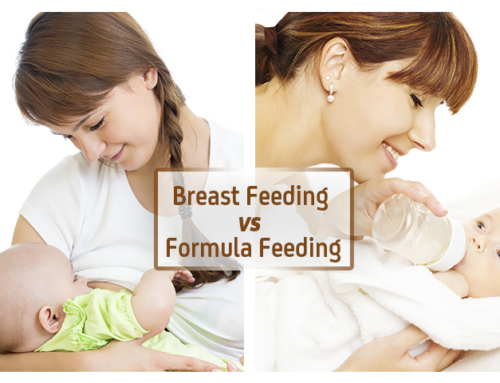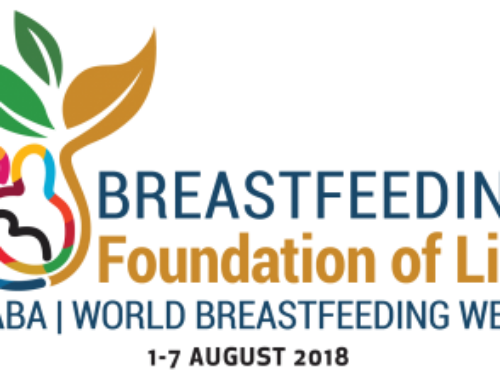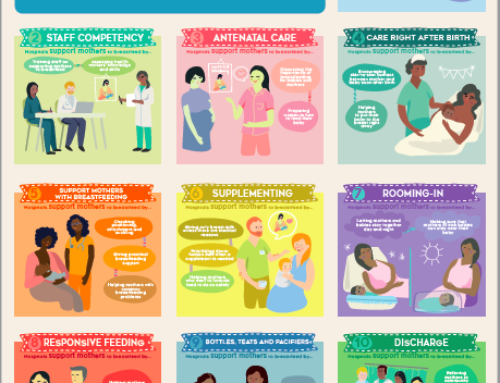Many a parent has experienced the high frequency crying that comes along in the first few months of a baby’s life. Sometimes the crying can seem too much, like something is wrong, and many people are simply told it’s “normal” and to just deal with it. Often it’s accompanied by poor sleep (waking every hour or less), rashes (which many assume are normal), and in some cases, vomiting/lots of spitting up/problematic poo. Here I want to talk about food sensitivities as one possible cause for these behaviours, why this is detrimental to breastfeeding and sleep, and how to work an elimination diet in (if you want) to help identify if this is the problem.
(Of note, many doctors dismiss the idea of food sensitivities, arguing they aren’t real. I have not read lots of research that supports this view, but I also find there is a large gap in the research on a modern diet in terms of breastfeeding anyway. What we do know is that dairy is definitely a known reactive food for many babies, even outside allergies, and wheat can also be in babies later diagnosed with Celiac disease. We have no research on additives and preservatives except in adults where the results are much like we would define as “colic” in babies, with gastrointestinal problems being the adult version. KellyMom has a great piece on food sensitivities that I recommend people read too.)
My Personal Story
My own personal story goes like this: For the first five days of my daughter’s life, she cried. It was a heartbreaking cry and I swore something was wrong. My husband, having been through the exact same thing with my stepson, kept telling me this was normal and just “colic” and he’d try and work out gas to alleviate any discomfort. Now, I may not have had my own kids yet, but I had two siblings much younger than I who I helped care for and had spent my adult life working with kids and babies in various forms. This did not seem normal by my experience.
On day five, our midwife came for our home visit (home visits are one of the many, many reasons I LOVE having midwives), took a look at the (what we thought was) minor diaper rash and immediately said, “Something you’re eating isn’t agreeing with her”. She said that it could be a number of things, but most common are dairy, soy, and wheat (because of the way we process them in foods) and that much of what people call “colic” behaviours are actually food sensitivities or intolerances that are activated through the digestion of breastmilk or formula (depending on the allergy). Our babies’ tummies aren’t built for a lot of what we eat from an evolutionary perspective and it takes time for our guts to build up what’s needed to digest the types of food we eat today, especially in terms of the way we eat these foods. For example, we don’t ferment soy which makes it highly digestible, but rather process it in a way that makes it hard for us adults to break down.
My midwife recommended starting with dairy and seeing how it went. This suggestion didn’t go over well with my husband who kept maintaining this was totally normal and reminding me that we had a freezer full of foods with dairy that we had prepared and had been kindly given by friends to get us through. In a low moment for him, he said that if I chose to cut out dairy, he wasn’t going to prepare me different meals. I said fine, I would handle it, but I was cutting dairy out.
It took about 2 days to see a difference but what a difference it was. That crying, colicky baby? Gone. Entirely. I went from a baby who cried regularly to one who rarely cried. We had that baby where people comment how they never heard her cry. Needless to say, my husband immediately backtracked, happily cooked dairy-free meals, but I also had to watch him try to come to terms with the fact that, having not known before, my stepson’s “colic” may very well have been food sensitivities. In short, he had to realize that the months of suffering were, perhaps, unnecessary. In my daughter’s case, it turned out to be a full-on allergy that has followed her for 5 years now. We keep being told she may still “grow out of it”, but we’re quite happy dairy free, thank you very much.
Effects on Feeding and Sleep
I mentioned at the start that food sensitivities (or allergies, though I stick with sensitivities because one often won’t know it’s an allergy until later on) can cause problems for the breastfeeding relationship and sleep and I’d like to elaborate a bit more on this. The first thing that parents often notice is crummy sleep and yes, food allergies and sensitivities (specifically dairy and wheat in babies later diagnosed with Celiac disease) have been shown in research to be linked to poorer sleep for the infant[1][2][3]. This shouldn’t be too surprising given that if your stomach is in pain, it is difficult to sleep. If you’ve ever had trapped gas or an upset stomach, think about how well you sleep and you’ll see why babies with food sensitivities suffer worse sleep.
The problem here is that infants don’t tend to sleep that much in a row as is. They sleep a lot, but it’s broken up and so some people struggle to identify what is normal for their infant and what isn’t. One of the cues to a possible food sensitivity is the combination of very broken sleep and lots of crying. They cry like they’re in pain, not because they’re “exercising their lungs”, but because they are in pain. When this continues for too long, parents end up losing their minds. In order to try to achieve better sleep, they fall back on two modern “solutions” to the problem: Switching to formula (mixed or completely) and extinction sleep training.
Depending on the nature of the sensitivity, switching to formula may seem like a magical elixir because it may end the pain nearly immediately. Of course, if the allergy is dairy-based, you’re less likely to see improvement, though doctors and others will then often recommend a soy-based formula so again, you end up with a happier baby. This is often the end of the breastfeeding relationship. If a mother tries to mix-feed without realizing a food sensitivity is at play, then she sees her baby fussing and unhappy after the breast, but content and happy after formula. It’s a no-win situation for her. Often women may then think they had supply problems or something else was “wrong” with their milk, further perpetuating these ideas as common problems.
If a family has simultaneously used extinction sleep training, they may also feel that there is now support for that method as well. Not knowing that baby was actually sleeping so poorly due to food sensitivities, they attribute the change to the sleep training, not the switch away from the offending food. This begs the question: what happens when people try extinction sleep methods without changing diet or feeding method? Here we often see these babies often don’t tolerate extinction methods (parents have reported babies continue to scream for days and weeks) because the crying is a reaction to the pain which isn’t eased. It is possible that babies will stop communicating this pain if they aren’t responded to at all in order to preserve their own energy, but this is one reason I urge parents never to systematically ignore their baby’s cries.
So here we have a physical, biological problem that is being ignored (often because parents simply don’t know it’s even something to look for) and now we end up with unhappy babies, breastfeeding problems, sleeping problems, and an all-around unhappy family. This is why it is paramount that families have an alternative to try and work out what might be wrong with their infant. Enter the Elimination Diet.
The Elimination Diet: What It Is and How To Do It
Many dieters or people with autoimmune diseases know about elimination diets. In short, it’s simply the elimination of certain foods from one’s diet. Unfortunately, in our society, it has become rather extreme and certain misconceptions exist about what it entails both short-term and long-term.
Let me start by being clear that an elimination diet is not supposed to be forever, especially not for breastfeeding purposes. During an elimination diet you may discover certain offending foods which will be gone for an extended period (or forever in terms of allergic reactions), but often foods can be reintroduced later to see how one reacts. Also, depending on how you do it, the initial stages of a diet may be more strict or limiting than what you end up with.
The overarching goals of the elimination diet are to (a) identify foods that are problematic, and (b) give the body time to heal if there has been exposure to these foods. Unfortunately, in (almost?) all cases, we have no idea what the foods are to begin with, so we end up having to cut out much more than we anticipate. In the case of my daughter, we didn’t know it was dairy and, frankly, lucked out that it was the culprit and the first food we eliminated. It could have been soy or wheat or gluten, but it wasn’t. Because we don’t know exactly which foods are offenders, the recommendation is often to go to be pretty strict with the eliminations to start, however, this isn’t for everyone (myself included) and so I offer an alternative below, but will start with the usual method of this diet.
Step 1: Identify all possible offending foods. When breastfeeding, it is likely one of the big three (dairy, soy, gluten) as they are difficult to digest in the forms we currently use them. I say the forms we currently use them as fermented soy, for example, is not difficult to digest yet the vast majority of soy in our Western diet isn’t fermented. However, if you have allergies in your family, this is time to take note and include these in the list of possible offenders as they have a statistically higher likelihood of being problematic for your child. (Now, you may end up having a child with some weird sensitivities, like mushrooms or apples – yes, I personally know people with these two sensitivities – and you may end up getting to these, but I don’t recommend starting out cutting everything out on the off chance your child has a sensitivity to something like that.)
Step 2: Eliminate all offending foods for a minimum of 2 weeks. In a Western diet, I can tell you that cutting out dairy, soy, and gluten will be a shock. They are in everything. (I recently had to do an elimination diet for my own health problems, supervised by my doctor, and had to cut these out and eventually all grains as it turned out my problem is with, of all things, rice. Go figure. But I’m glad to have wheat back in my diet.) This is the hard part as you will likely be cutting out nearly all processed foods, eating out is difficult, and you will become master of reading labels. However, this is actually an incredibly healthy diet. You’ll eat tons of fruits and veg, meats and/or legumes, some grains like quinoa or rice, and will likely feel better for it. Treats are difficult because they often have at least one of these offenders, but there are great dark chocolates that are yummy and fit most elimination diets – IKEA’s dark chocolate actually uses sunflower lecithin instead of soy if you’re looking for a good fix. Why two weeks? You want enough time to allow your body to actually process anything that has remained in your body (not all foods are fully processed immediately) and to see any changes in your baby.
Step 3: After 2 weeks, evaluate how baby is doing. If you haven’t seen a difference, you can be sure the problem is either another food or another problem (if this is the case, I recommend meeting with a lactation consultant or paediatrician to try and identify the problem, though you can look here for other reasons why you may have a very fussy baby on your hands). You can safely reintroduce the foods you eliminated, your elimination diet is over unless you choose to repeat the process with a new list of potential foods. If after two weeks you’ve noticed a difference in your baby, you can be pretty sure that one of the foods is affecting your child and now comes narrowing it down.
Step 4: Reintroducing foods. Remember when I said you weren’t cutting everything out forever? This is the stage where many mothers who have even gotten this far end up giving up and switching to formula as many don’t seem to realize you are supposed to reintroduce to try and find the actual offender. Many end up thinking they have to remain in this very deprived state indefinitely and this isn’t a positive for them; formula looks much easier. However, that’s not the way an elimination diet works. The goal here is to only reintroduce one food at a time and how you pick that first food is up to you. Some people go for the food they’ve been missing the most, others try to go for the one they miss least, giving themselves more time to “get over” those cravings of the other foods. Regardless of what you pick, you reintroduce it in moderate amounts. Too little, you may not see an effect in the time frame you’re giving yourself, too much and your child may have a reaction you don’t want to see.
How long you spend in this step will vary based on your child’s reaction. If your child reacts immediately (mine did to dairy when we tried to reintroduce around three months), then cut it right back out, give your child a few days to heal, then move on to the next reintroduction. If your child’s behaviour doesn’t seem to change, then continue with only the one food for two weeks. If, at the end of two weeks, your child remains happy and not in pain, you can likely assume it’s safe to keep eating that food and then move on to the next reintroduction.
Some may be wondering what happens in the cases where you reintroduce everything and nothing changes? Was it really a food sensitivity? The answer is “We don’t know, but it’s definitely possible.” Depending on when you started the elimination diet and how long it took to reintroduce everything, your child may have “grown out of” their sensitivity. Remember how I said that the gut actually does develop to handle these foods? Some develop faster than others and your child may simply have had a good time free of these foods, has built up their gut, and is now able to handle them. (Consider yourselves the lucky ones!)
If you identify the offending food(s), you will want to keep it(them) eliminated for a period, but you are always free to try reintroductions to see if your child is now prepared to handle it. (Remember, your child may react to more than one of the foods so just because you see a reaction to one, doesn’t mean they are fine on the others.) The only time I recommend not reintroducing without an allergy test is if it is a food that you have a family history of severe allergies with. For example, if family members go into anaphylactic shock eating peanuts and you discover it’s something that causes your child pain and discomfort even through your breastmilk, keep those things out of your diet until you’ve spoken to your doctor and/or had allergy tests done.
The Modified Elimination Diet
For some, even the idea of two weeks on such a strict diet is daunting or seemingly impossible. The last thing I want anyone doing is switching over to formula right away because of this fear. For you, I offer up an alternative way to test things that isn’t as ideal, takes longer, but may work for you. In this modification, Step 1 of identification remains the same, but in Step 2, you choose the first food to eliminate instead of eliminating all of them, as we did by eliminating dairy first, and after this two-week period, depending on your child’s behaviour, you either move on to the next or stop altogether.
Why is this not ideal? For starters, some sensitivities are cross-reactive. This means that your child will not only be sensitive to one, but several foods. When doing this modified diet, it becomes difficult to tell if eliminating one thing is helping if there is still another offending food in the mix. In these cases, I recommend that if you notice even the smallest of changes, to keep that food out while you eliminate the next. You can always try reintroduction later if you find a more serious offender, but you could end up going in circles, thinking you aren’t finding the solution when really you just keep reintroducing one of many offending foods.
This is also why it takes longer. If, for example, removing dairy resulted in a small change after two weeks then you need to keep dairy out while you remove the next item – say soy – and if you see improvement here, you then need to try the reintroduction of dairy to see if it results in a change back to how things were. The more foods you add in, the longer this process becomes. However, if you struggle with dietary changes, the slow and steady approach can work wonders, making the process of elimination and change much more bearable.
Conclusions
If you are struggling with a fussy baby who seems to be in pain and is struggling with sleep, an elimination diet is something that you can do at home that may help alleviate the problems. It takes time and it takes dedication, but it is far better to help identify the problems your child is having that simply try to treat symptoms, which is what the common switch to formula and sleep training seem to do. If you think the idea of one is too scary or requires too much change, look at the modified approach to see if that is easier for you. Most of all, though, remember that these diets are not supposed to be forever. This is temporary and most people will be able to reintroduce foods for themselves and their baby in time. And if not? Well, isn’t it good you found out early?
__________________________
[1] Kahn A, Mozin MJ, Casimir G, Montauk L, Blum D. Insomnia and cow’s milk allergy in infants. Pediatrics 1985; 76: 880-4. [2] Tanpowpong P, Broder-Fingert S, Katz AJ, Carargo Jr CA. Age-related patterns in clinical presentations and gluten-related issues among children and adolescents with celiac disease. Clinical and Translational Gastroenterology 2012; 3: e9. [3] Kahn A, Rebuffat E, Blum D, Casimir G, Duchateau J, et al. Difficulty initiating and maintaining sleep associated with cow’s milk allergy in infants. Sleep 1987; 10: 116-21.






As a mum to a baby with food sensitivities, this article is spot on! I wish I could have read this article when my daughter was first born. We identified dairy as a problem within a few weeks, but she has multiple sensitivities and we didn’t identify all of them until she was almost 1 year old. We are now (at 18 months) at the stage of reintroducing each food to see if she can now tolerate it or not. For milk, wheat and egg allergies there is a ‘ladder’ to follow which introduces each individual food in very well cooked form, then lightly cooked, then uncooked form (for milk) as cooking them makes them easier to digest. For example, we are about to start the milk ladder which has 12 stages. I have started a blog about healthy eating with food sensitivities with lots of recipes and advice for anyone else who has a baby with multiple food intolerances (or has them themselves).
Zoe – would love your blog with recipes for multiple food intolerances!
With the exception of true food allergies, which are rare, my understanding was that the link between mother’s diet and breast milk causing baby distress was pretty much debunked. I think kellymom has several resources on this. My lactation consultant (one of the most experienced in the province) also noted that the thinking on this had changed over the years, and said there was no need to restrict my diet. The time it takes most people to work through an elimination diet coincidentally often aligns with the time it takes for the colicky period to subside, hence the belief, based on anecdotal evidence only, that Mom eliminating certain foods can help the breastfed baby. If this were true, then surely the advice would be consistent across all cultures. Yet, each one seems to have its own old wives’ takes regarding what Mom shouldn’t eat. And all this further undermines women’s confidence in breastfeeding.
I sympathise with a colicky baby, as my daughter was colicky too. We never, ever let her cry and tried any number of solutions, many humourous in hindsight, including eliminating dairy and other foods. The pressure on me to fix the colic by messing with my diet when I was already starving from breastfeeding, tired, and not in control of grocery shopping was completely nerve-wracking. I hate to see other moms guilted into this unnecessarily!
Anyway, I normally expect more rigourous research here, but I suspect this one hit too close to home 🙂 I would look forward to a follow-up, looking at the latest research.
The KellyMom piece is great and actually doesn’t argue for debunking more than it argues that sensitivities are now being “overdiagnosed” (diagnose is the wrong word, but you get the gist). The medical community has largely ignored food issues in the past and nothing I’ve read actually debunks any of the food research, though here’s what I know: Dairy has been shown to affect babies via allergy, intolerance or sensitivity (which shouldn’t be surprising from an evolutionary perspective) and stands up to all new research. You can read that on KellyMom too in addition to various research papers. It’s also highly cross-allergenic so soy problems can go hand in hand, though I don’t know if this has been tested in babies, but shown to be a factor in adults. Wheat is mixed but there is evidence if a baby is later diagnosed with Celiac disease of real problems earlier, especially with sleep and crying.
The main issue, as I see it, is that we have NO research on the effects of preservatives and additives in these foods on babies and what we do have in adults shows effects very similar to colic (actually what we see are high rates of gastrointestinal problems including IBS and colitis). Wheat is one of the main areas in our diet where additives are rampant. A loaf of freshly baked bread might last three days yet commercial bread wouldn’t even be on the shelves at that point. Perhaps this explains the mixed findings on wheat and I for one wouldn’t be surprised if most sensitivities were to these chemical additions (and remember sensitivities are still not common). (Perhaps I should mention this, but as it’s my hypothesis, I’m not sure it’s relevant, but also why I focus on telling people that IF they’re going to do an elimination diet, they should look at their family histories to decide what to eliminate.)
One final note, the idea that our Western medical world has about the time of colic just passing still ignores the very real cross-cultural data that finds massive differences in crying rates between babies. Although all babies peak at a certain point (something many doctors try to use as evidence of universality of fussiness), the fact is that babies in a western society cry approximately 4-5 times more than their counterparts in hunter-gatherer cultures. Is diet the only cause? Likely not at all, but as more evidence comes to us about the gut-brain link and the effects of modern food on our gut, it is hard to say anything has been “debunked”. Especially from professionals who, as a whole, didn’t support the idea to begin with, often arguing that what we see in the West is normal. And of course, this doesn’t mean that all fussy babies are reacting to food. Just that some of them might be.
My experience was that there was a knee-jerk reaction for others to suggest that any discontentment in my baby was due to “something I was eating”. This was extremely stressful in an already stressful life change and based on what I read the need for eliminating foods in the breastfeeding mother is rare. Although my baby didn’t have the symptoms of diaper rash or inconsolable crying. She just wanted to sleep near Momma.
Two years later, I have recently eliminated egg from my diet after a very real reaction in my child after I ate four delicious deviled eggs and nursed my toddler about four hours later. Turns out egg protein is absolutely transmitted in breastmilk and my child has a diagnosed food allergy. Go figure. I am eliminating a food from my diet two years in! I never saw that one coming.
Thank you so much for this article and for the reply to a previous comment . I think your perspective is bang-on.
One of the reasons for a paucity of research in this area: there’s no money in it. Drug companies can’t sell elimination diets. But they can sell drugs to treat all the signs and symptoms of underlying food sensitivity and call it by another name!
[…] Evolutionary Parenting: Elimination Diets: Food Sensitivities In The Breastfed Baby […]
Also something to note: sometimes two weeks IS NOT ENOUGH. I eliminated dairy/soy/eggs for 4 weeks before also eliminating the rest of the top 8 allergens. It took 5+ more weeks for normal poops (after a few months of very mucuosy poops). I suspect it’s gluten/wheat and perhaps dairy as well, and I will start reintroducing foods here soon.
That’s a great point because yes, it can take longer, though typically people see some change in the first couple weeks. Did you see any after two weeks of the removal of the other 8 allergens?